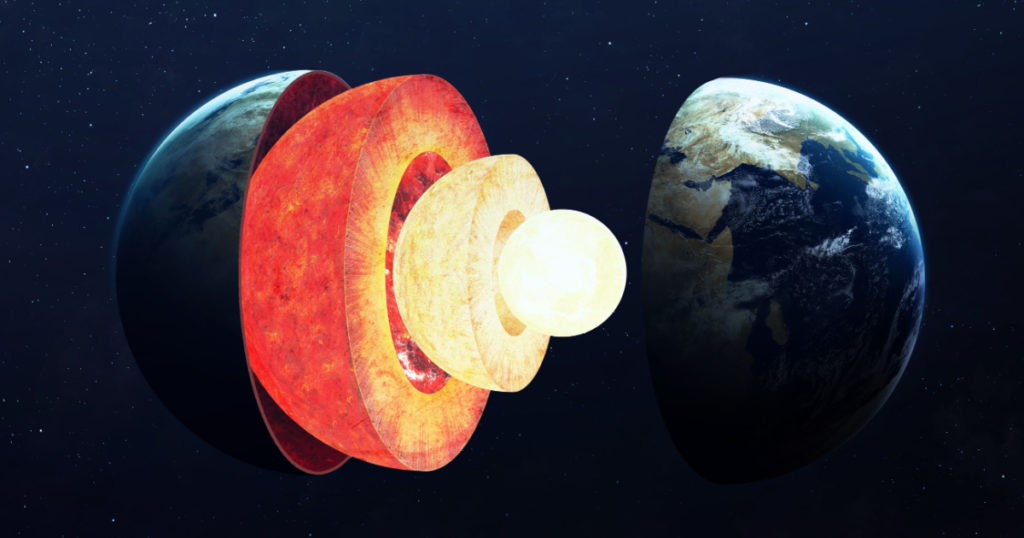The Bible, a sacred text that has shaped the beliefs and stories of countless generations, often seems like a repository of faith and morality. Yet, beneath its spiritual and moral teachings, a surprising parallel exists: science. While the Bible is fundamentally a religious text, numerous verses within its pages exhibit intriguing connections to modern scientific discoveries. These remarkable alignments offer a fresh perspective, illuminating the harmony between faith and scientific understanding.
Read: Science Explains What Happens to Your Body When You Eat Oatmeal Every Day
Delving Deeper

Let’s embark on a journey that explores these intriguing connections, where biblical verses provide insights that resonate with contemporary scientific knowledge. From Earth’s shape and fiery core to references to the hydrologic cycle and even historical events like the Great Flood, the Bible offers more than spiritual guidance—it occasionally appears to anticipate scientific truths.1 Here, we delve deeper into these captivating intersections, shedding light on how the Bible mirrors, and sometimes even predicts, scientific revelations.
Read: Science Says Men Don’t Mature Until Their 40’s. What does that Say About Womens and Mens Brains?
1. Earth’s Round Shape

The Bible’s reference to the Earth as a “circle” in Isaiah 40:22 mirrors modern scientific evidence that supports a spherical Earth. This ancient observation remarkably corresponds with what we now understand about our planet’s shape.
2. Earth’s Hot Core

Job 28:5 presents an intriguing insight, describing the Earth’s transformation “below as by fire.” The Bible’s poetic description aligns with scientific theories about our planet’s hot core—a molten, fiery center that influences geological processes.
3. Earth Suspended in Space

Job 26:7 intriguingly mentions that the Earth is “suspended over nothing.” While this may seem metaphorical, it mirrors our contemporary understanding of Earth’s position in space, held in orbit by gravitational forces without any physical support.
4. Hydrologic Cycle

The water cycle, a fundamental natural process, is notably described in the Bible. Ecclesiastes 1:7, Amos 9:6, and Job 36:27-28 allude to the cyclical flow of water from seas to the skies and back to the earth—a concept well-aligned with today’s scientific knowledge.
Read: 8-Year-Old Girl Invents Solar-Powered Water Heater and Wins Nuclear Sciences Prize
5. The Great Flood

The Bible’s story of The Great Flood and Noah’s Ark is one of the most well-known biblical narratives. While some aspects may remain unconfirmed, geological evidence suggests that a significant flood event might have occurred, akin to the one described in Genesis 6:13-22.
Read: The People Who Claim That They Found Noah’s Ark
6. Countless Stars in the Universe

Jeremiah 33:22 poetically describes descendants as numerous as the “stars in the sky.” This striking imagery aligns with our modern understanding of the vast number of stars in the universe, which comprises an astonishing multitude of galaxies and stars.
7. Variability in Star Brightness

Corinthians 15:41 highlights the varying splendor of stars. In the Bible’s passage, we find a reflection of scientific knowledge about the diversity of stars, each shining with different levels of brightness due to factors such as size, age, and composition.
Read: Researchers Found More Evidence That Key Part Of The Bible Really Did Happen
8. Formation of the Universe

Hebrews 11:3 intriguingly alludes to the universe’s formation—emerging from the invisible to the visible. This notion echoes scientific ideas about the formation of atoms, where tiny particles create the visible matter that constitutes our world.
9. David and Goliath

The Bible’s tale of David and Goliath in 1 Samuel 17 presents a compelling narrative about overcoming adversity. While Goliath’s extraordinary height may seem legendary, some scientific explanations suggest that he might have had gigantism, a medical condition driven by abnormal growth hormone production.2 Additionally, the reason for David’s success may be linked to the dense barium sulphate stones found in the area.
10. The Deluge and Mountain Flooding

Psalm 104:6 poetically conveys the idea of waters covering the mountains. This imagery resonates with scientific understanding, not of a global flood but of geological processes that have shaped our planet over millennia.
11. Solar Eclipse

Joshua 10:12 records an extraordinary event where the sun stood still. Researchers have suggested that this biblical account could be a historical record of a solar eclipse in ancient times, potentially occurring on October 30, 1207 BCE.
Read: Science Explains Why You Can’t See Stars Outside Plane Window While Flying
12. Early Cleanliness Practices

Leviticus contains verses that emphasize the importance of isolation and cleanliness during times of illness. Remarkably, these ancient guidelines for maintaining hygiene resonate with contemporary public health measures during pandemics, highlighting the Bible’s relevance to health and sanitation practices.
In Conclusion

The fascinating congruence between the Bible and scientific findings offers a unique perspective on the harmony of faith and reason. The Bible’s insights, whether about the Earth’s shape, the hydrologic cycle, or remarkable events, resonate with modern scientific understanding. These connections bridge the gap between faith and science, illustrating the enduring human quest for knowledge. Instead of division, they inspire unity in the pursuit of understanding, emphasizing that faith and reason can coexist harmoniously in our ever-evolving exploration of the world.
Keep Reading: 10 Ways The Bible Has Changed Throughout History
Sources
- “7TIMES SCIENTISTS FACT-CHECKED THE BIBLE.” Inverse. Eleanor Cummins. August 11, 2017.
- “Science confirms these parts of the Bible.” MSN. October 2023.

